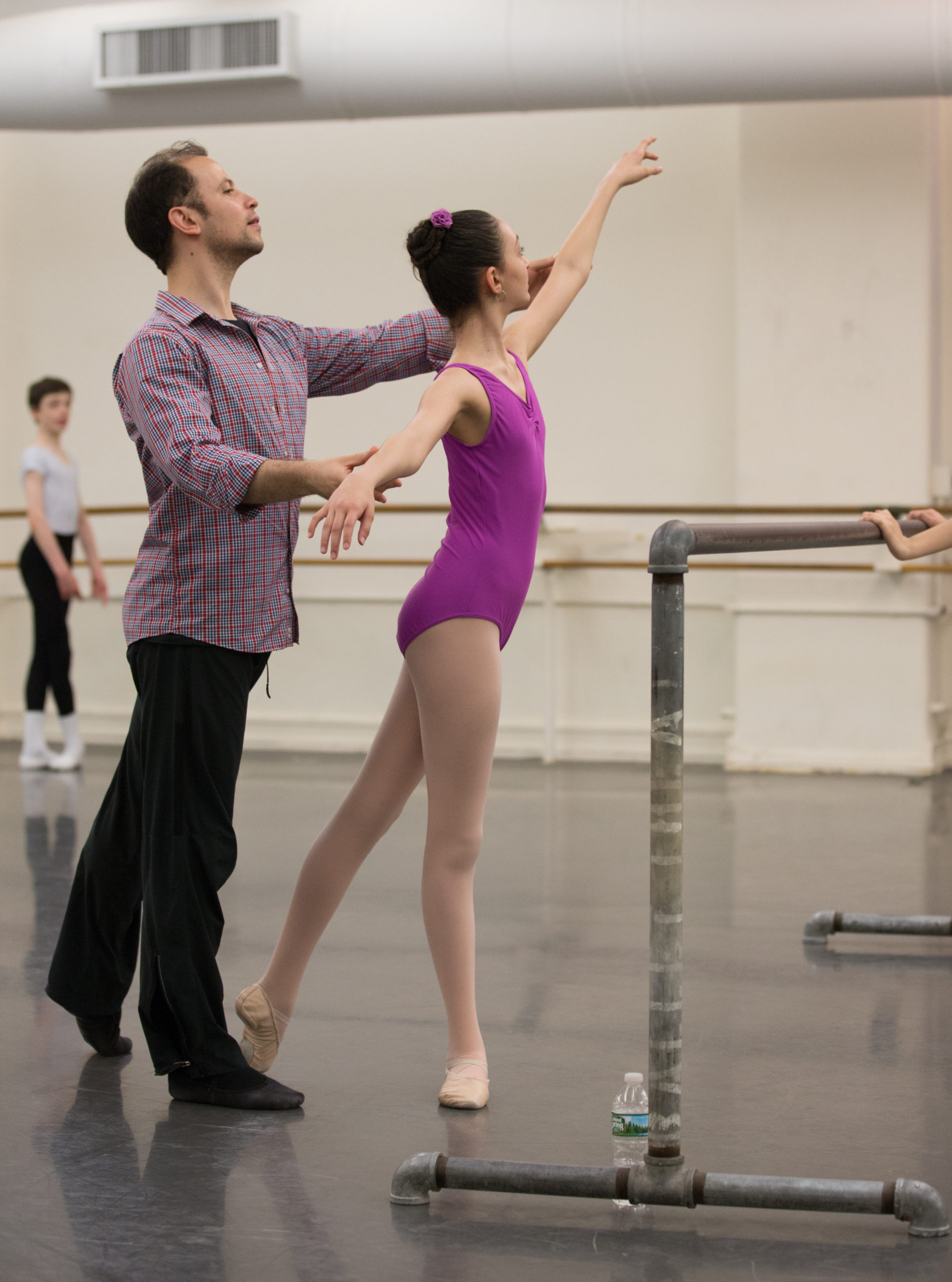In the JKO School you have excelled in teaching character dance, how would you describe character dancing?
Character dance is a combination of classical ballet with primarily folk dances from around the world, especially Western Europe. It offers a chance to learn about culture, music, and rhythms. It is an opportunity to learn about the history of dance, the choreographers, what their respective countries are all about, why they move in a certain way, and why they express themselves in a certain way. I am constantly researching new movements from specific regions. It is fun for me, and fun to teach. Since it is not as specific as pure classical dance, it has opportunity for a little leeway. The class’s stance is freer – you can get away with more and you can feel more relaxed, yet it is connected to the classical training so it feeds off what the dancers are learning in their regular classes.
 Mikhail Ilyin. Photo: Rosalie O'Connor.
Mikhail Ilyin. Photo: Rosalie O'Connor.